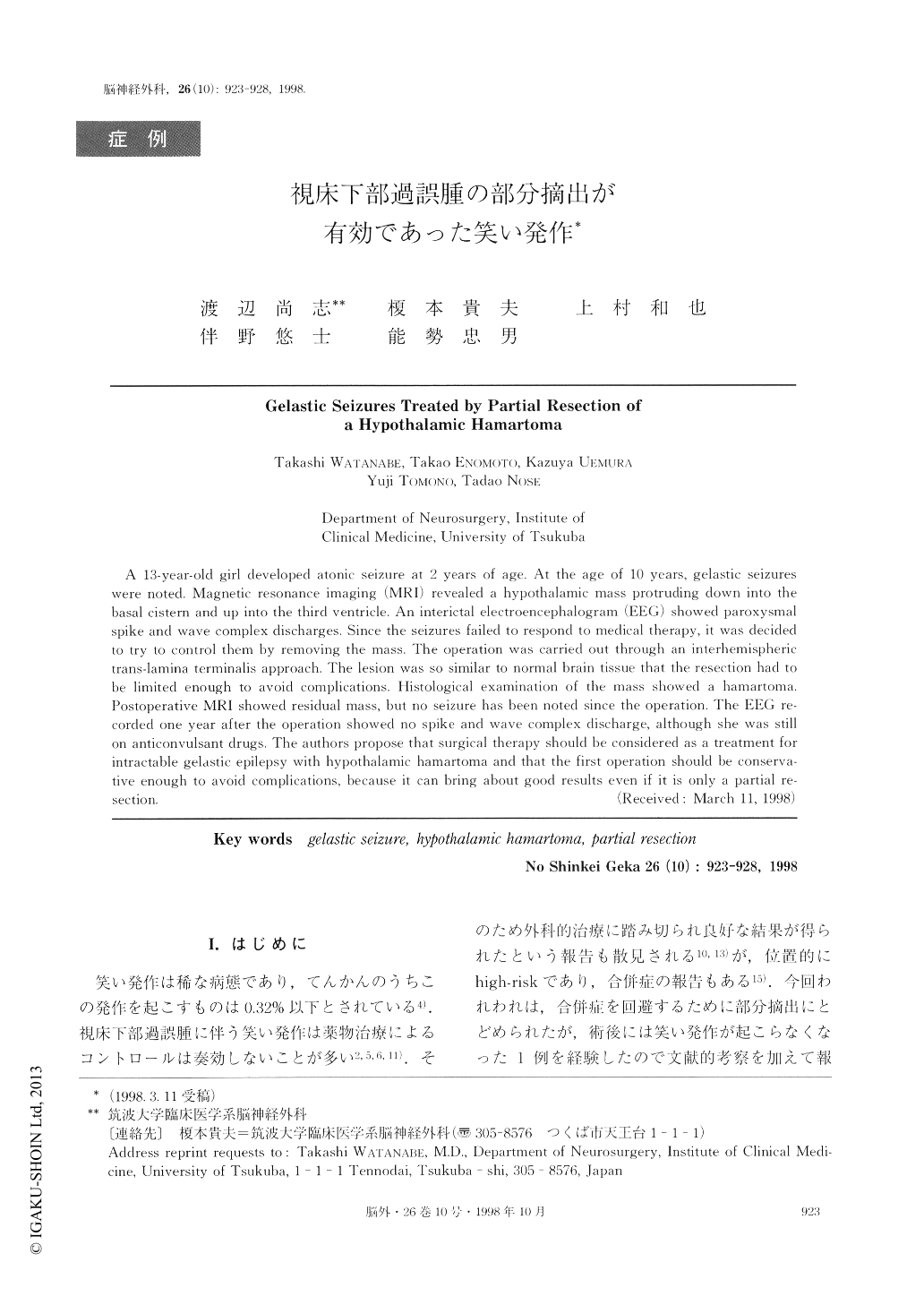Japanese
English
- 有料閲覧
- Abstract 文献概要
- 1ページ目 Look Inside
I.はじめに
笑い発作は稀な病態であり,てんかんのうちこの発作を起こすものは0.32%以下とされている4).視床下部過誤腫に伴う笑い発作は薬物治療によるコントロールは奏効しないことが多い2,5,6,11).そのため外科的治療に踏み切られ良好な結果が得られたという報告も散見される10,13)が,位置的にhigh-riskであり,合併症の報告もある15).今回われわれは,合併症を回避するために部分摘出にとどめられたが,術後には笑い発作が起こらなくなった1例を経験したので文献的考察を加えて報告する.
A 13-year-old girl developed atonic seizure at 2 years of age. At the age of 10 years, gelastic seizureswere noted. Magnetic resonance imaging (MRI) revealed a hypothalamic mass protruding down into thebasal cistern and up into the third ventricle. An interictal electroencephalogram (EEG) showed paroxysmalspike and wave complex discharges. Since the seizures failed to respond to medical therapy, it was decidedto try to control them by removing the mass. The operation was carried out through an interhemispherictrans-lamina terminalis approach. The lesion was so similar to normal brain tissue that the resectionhad tohe limited enough to avoid complications. Histological examination of the mass showed ahamartoma.
Postoperative MRI showed residual mass, but no seizure has been noted since the operation. The EEGre-corded one year after the operation showed no spike and wave complex discharge, although she was stillon anticonvulsant drugs. The authors propose that surgical therapy should be considered as a treatmentforintractable gelastic epilepsy with hypothalamic hamartoma and that the first operation should heconserva-tive enough to avoid complications, because it can bring about good results even if it is only a partial re-section.

Copyright © 1998, Igaku-Shoin Ltd. All rights reserved.


